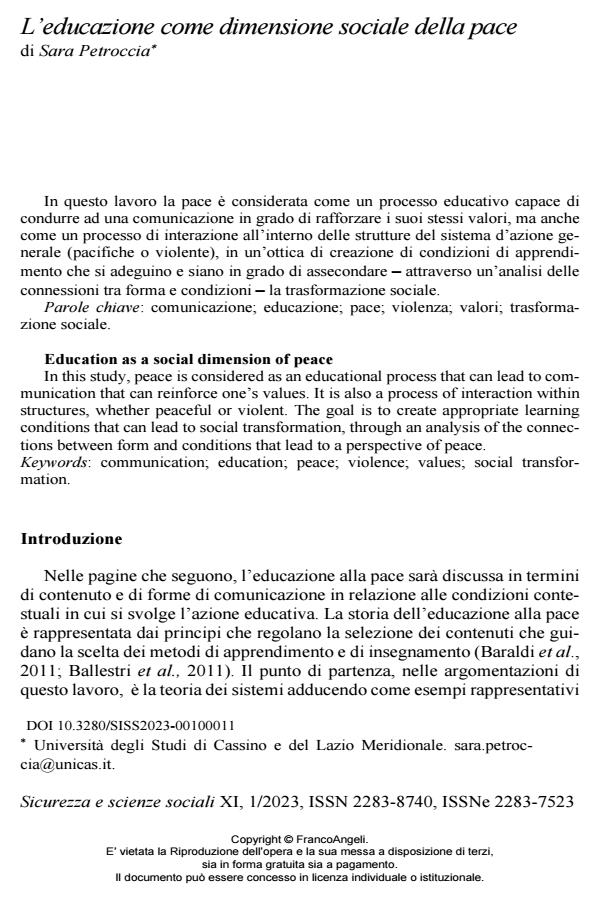Education as a social dimension of peace
Journal title SICUREZZA E SCIENZE SOCIALI
Author/s Sara Petroccia
Publishing Year 2023 Issue 2023/1
Language Italian Pages 13 P. 120-132 File size 181 KB
DOI 10.3280/SISS2023-001011
DOI is like a bar code for intellectual property: to have more infomation
click here
Below, you can see the article first page
If you want to buy this article in PDF format, you can do it, following the instructions to buy download credits

FrancoAngeli is member of Publishers International Linking Association, Inc (PILA), a not-for-profit association which run the CrossRef service enabling links to and from online scholarly content.
In this study, peace is considered as an educational process that can lead to communication that can reinforce one’s values. It is also a process of interaction within structures, whether peaceful or violent. The goal is to create appropriate learning conditions that can lead to social transformation, through an analysis of the connections between form and conditions that lead to a perspective of peace.
Keywords: communication; education; peace; violence; values; social transformation.
Sara Petroccia, L’educazione come dimensione sociale della pace in "SICUREZZA E SCIENZE SOCIALI" 1/2023, pp 120-132, DOI: 10.3280/SISS2023-001011